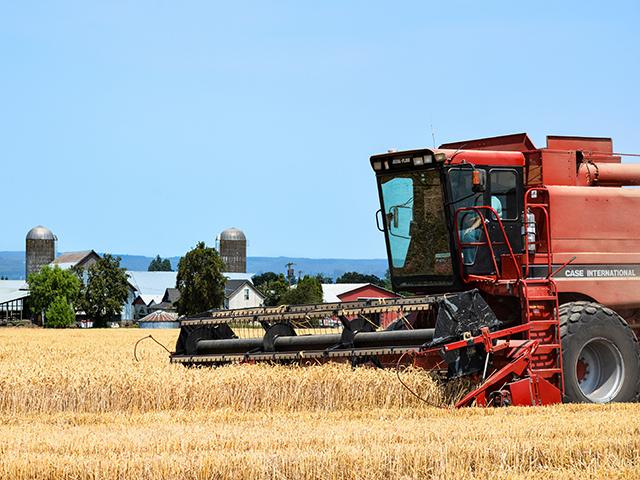Wheat Overcomes Climate Extremes
A Crop for All Weather
The skies above the Northern Plains only offered John Hofer 4 inches of rain in 2021. By June, two years into a scorching drought, the Milnor, North Dakota, farmer had nearly given up on his dryland spring wheat field. But, the crop soon proved its mettle.
Using small but well-timed spurts of rainfall, the field of West Bred WB9590 eked out 122.23 bushels per acre (bpa), earning Hofer a Bin Buster award for the highest-yielding dryland spring wheat field in the 2021 National Wheat Yield Contest.
"The wheat was only 18 to 20 inches tall," recalls Hofer, who farms on Sundale Farm, within the Sundale Hutterite Colony. "That is what surprised us even more. It was short wheat, but it yielded to high heaven."
Overall, the 2021 contest, sponsored by the National Wheat Foundation (NWF), was a testament to the hardiness of the humble wheat plant, says Anne Osborne, NWF project manager for the contest.
"Better than expected -- that's what we're saying for [2021]," she says. "Even with the drought, the Valentine's Day freeze and too much moisture at harvest in the Northeast, most growers are saying wheat looks better than expected. It is resilient, that's for sure."
WHEAT RALLIES
Steven VanGrunsven had never seen a heat wave like the one that visited his normally rainy Willamette Valley of Oregon last summer. In June, temperatures soared as high as 114°F. Then, the winds started.
P[L1] D[0x0] M[300x250] OOP[F] ADUNIT[] T[]
The superheated air roasted summer crops, shattering grass seeds and literally cooking berry crops as they sat in the field, VanGrunsven recalls.
Fortunately, all his fields have access to irrigation, which helped his wheat not only weather those extremes but soar to award-winning heights. His irrigated white winter wheat field of Limagrain's LCS Shine crested 192.73 bushels per acre (bpa), setting the highest yield in the contest this year and earning a Bin Buster award for that category.
That winning field also got a dose of the abundant manure stores from his family farm's dairy. "That's one of our secret ingredients, I guess," VanGrunsven says. He estimates the field got the equivalent of about 200 pounds of nitrogen, half from manure and half from spring-applied urea, as well as potash and sulfur.
QUALITY MATTERS
The National Wheat Yield Contest recognizes 24 national winners and dozens of state winners each year. In addition to recognizing high yields, the contest also gives out awards to dryland growers who yield the farthest above their county averages -- a nod to the diverse geography of wheat-growing regions.
However, the contest organizers are looking for more than high yields. They also want a good loaf of bread or the perfect pastry at the end of the process.
As a result, only Grade 1 and Grade 2 wheat can qualify for rankings, and the 24 national winners will now have their samples shipped off for an exhaustive set of baking and milling tests. The goal is to build a database that can sort out how wheat-management practices -- and weather extremes -- affect critical quality standards, Osborne says. "What we're looking forward to learning is how to get these higher yields and keep that excellent quality that customers want," she explains.
At 387 entries and 150 final harvested samples, contest participation was down a little in 2021, a drop driven almost entirely by drought-reduced spring wheat acreage in the Northern Plains, Osborne notes.
What surprised her -- and growers -- was the quality of spring wheat that did make it through the season. "The spring wheat entries we got were very high quality with a lot of 14 and 15 protein," she says.
No one was more surprised than Hofer, whose winning spring wheat field didn't get its usual June nutrient sidedressing pass, because its potential looked so low. But, the dry soils must have held tight to the 100 pounds of nitrogen -- partly from turkey litter -- 50 units of phosphate and 40 units of potash that were broadcast before planting, he says.
The genetics of the wheat seed is also key, contest winners agree.
"Our goal is high-quality, low-protein, soft white wheat," says VanGrunsven, who sends his wheat through the Port of Portland to a variety of Asian markets. "Our buyers pay more for quality, and these new varieties are helping us out with that. I don't know a farmer in my area who went under 60-pound test weights," he notes. "We may have had fewer bushels per acre this year, but the quality was amazing."
[PF_0322]
(c) Copyright 2022 DTN, LLC. All rights reserved.




